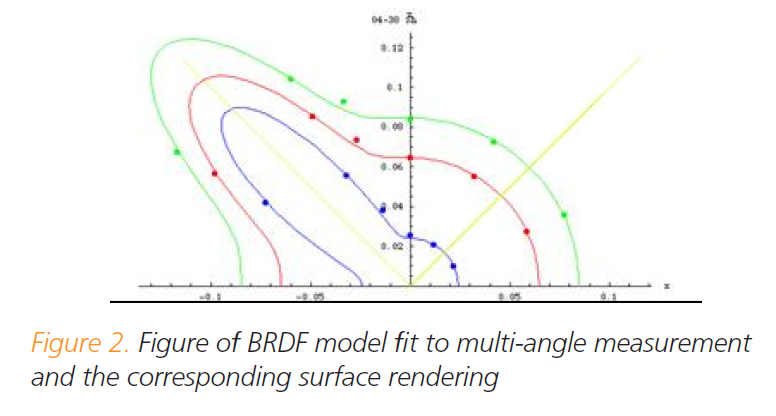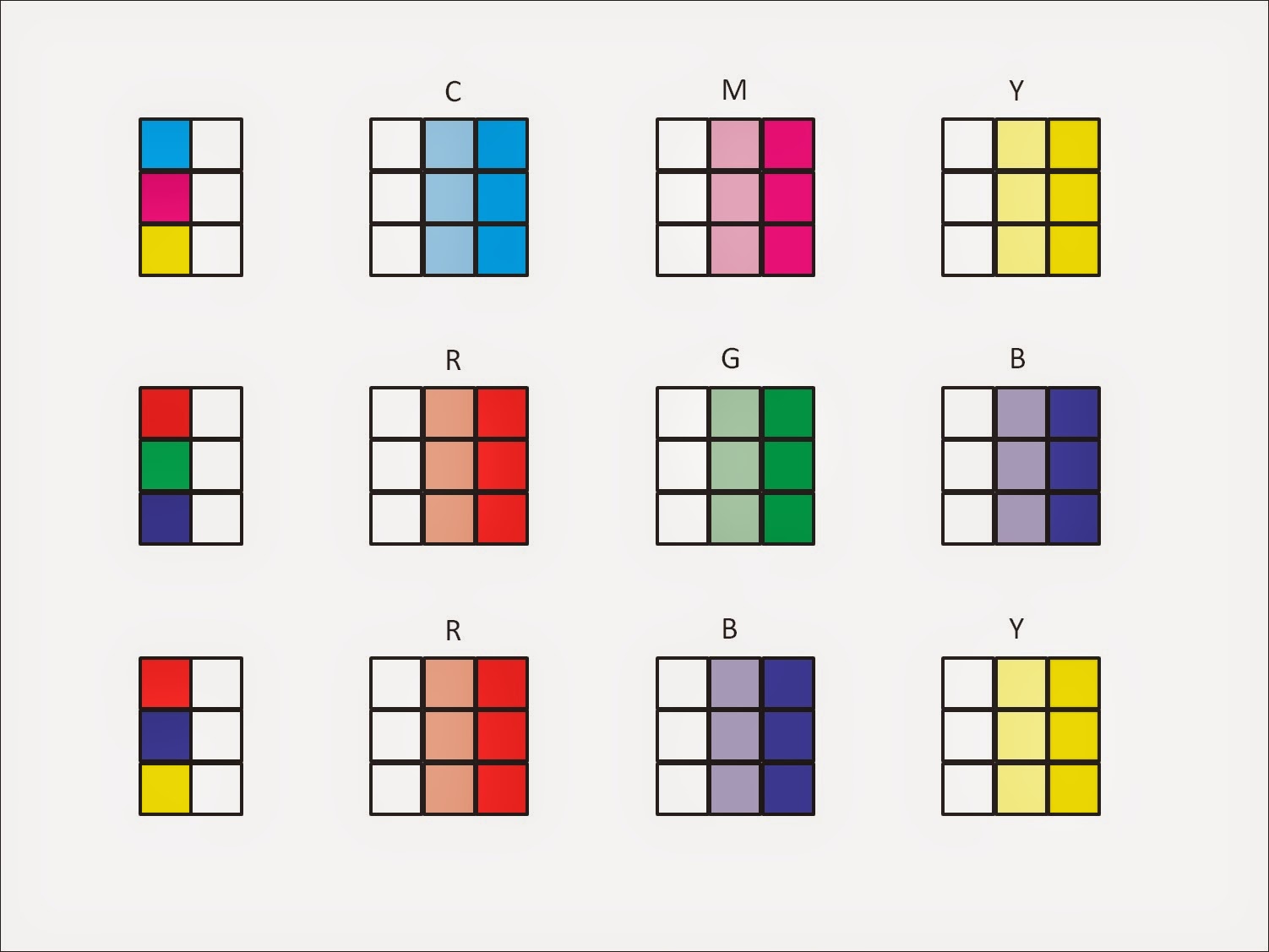For this week's blog post, I went in search of that frumious beast, the indicatrix. This indicatrix is the link between the previous blog post that describes the nature of reflected light, and the eventual blog post that will describe the various instruments designed to measure parts of the indicatrix.
John the Math Guy slays the Manxome Indicatrix
What is an indicatrix?
First, let me clarify. I am not talking about "Indie cat tricks", which is to say, YouTube videos of felines doing awesome stuff. While this would be an absolutely fascinating blog topic, it is not what I am writing about. At least not today.
The indicatrix tells you absolutely everything you need to know about the reflectance of an object. It is the function that tells us the amount of light that is reflected at every possible combination of angles of incoming and outgoing light. (I would call these influx and efflux angles, but I don't want the bullies to take my lunch money again.)
Picture yourself someplace like, I dunno, Athens, Wisconsin. There is a spot just west of this town which is at 45N latitude, 90W longitude. Exciting. Big tourist trap. While you are trying out the local beers, you point a flashlight at the center of the Earth, where you have placed some sort of sample. Meanwhile, your buddy is sitting near Qitai, Xinjiang, China, which is at 45N 90E. You ask your buddy to measure the intensity of the light on your sample.
Measuring one point of the indicatrix
Now I realize that there are some minor technical problems with this scenario. The Earth will, of course, get in the way of you being able to shine your light on the sample. It is also quite possible that, even with the Earth out of the way, your flashlight may not have quite enough power to illuminate the sample. And (this is the big one) the location in China is about 2 km away from any road, so your poor buddy has some overland hiking to do.
Once your buddy has written down the intensity of light that he sees from there, you politely ask him to fly to Nova Scotia and row out in a boat to a spot about 800 km east of the island, which is at 45N 90W. Once again, he jots down the intensity of the light that he sees when he looks at your sample.
The two of you are well on your way to collecting the indicatrix of the sample that you placed during your journey to the center of the Earth. You will, of course, send your buddy to Honolulu, and Tokyo, Anchorage, Tuscany, Oslo, Las Vegas, and beautiful downtown Burbank. Eventually, he will stand at every conceivable location in the northern hemisphere to record the intensity of the reflection from your sample.
Your intrepid buddy will come back with more frequent flier miles than Phileas Fogg, and you will have the most lovely indicatrix in the world. But you will not have traveled at all. Does that seem right? I think not! To collect the entire indicatrix, you must also putting on your globetrotter sneakers.
To collect a complete indicatrix, you need to measure the reflectance at each and every influx angle (your lat/lon on the globe), and at each and every efflux angle (your buddy's lat/lon). The indicatrix thus has a reflectance value at every combination of lat/lon and lat/lon. So, the mystical indicatrix is a beast that lives in four dimensional space.
Mythical creature?
I went looking for pictures if this beast, the indicatrix. I started my search in the venerable textbooks written by venerable people who wrote books about color stuff. I found various depictions among my library, as shown below. The images are all in polar coordinates, with the distance from the sample as an indication of the amount of reflected light. This is either a bit confusing, or completely obvious.
The drawings all show some amount of bulk reflection, along with a bump caused by the specular reflectance. They illustrate that the amount of gloss determines the shape of the indicatrix at the specular angle. The harder the surface, the bigger the total area of the bump. The smoother the surface the narrower and taller the bump.
Color in Business, Science, and Industry, Judd and Wyszecki, 1975
Principles of Color Technology, Billmeyer and Saltzman, 1981
Goniophotometry of Printing Ink, Seymour, TAGA 1996
Handbook of Print Media, Kipphan, 2001
Improving Metallic Ink Printing through Polarized Densitometry, Mannig and Verdeber, 2002
BASF Handbook on Basics of Coating Technology, Goldschmidt and Steitbeger, 2003
Paper Products Physics and Technology, Ek, Gellerstedt, and Henriksson, 2009
Industrial Color Physics, Klein, 2010
Notice anything odd? The first odd thing I see is that there ate eight depictions of the indicatrix that all show light coming in at one angle, that is, with me standing on Meridian Road, in Athens, WI. None of these drawings would suggest that a full indicatrix must have a measurement for every influx angle as well as for every efflux angle..
Notice anything else that's odd? How about this... Every single drawing shows Phileas Fogg traveling just along the semicircle from Santa Cruz Island to Athens, Wisconsin, to the North Pole to Qitai China to a spot in the Indian Ocean between Sri Lanka and Singapore. None of the drawings show Phileas catching some rays in Barbados, or Tiajuana, or anywhere else off that circle.
So, the first two odd things are sort of the same, that the classical depictions of indicatrices are all one-dimensional, and as we know, the indicatrix lives in four dimensional space.
Notice anything else that's odd? You might not notice this right off - at least until I mention it - but these tdepictions of indicatrices are all drawings! All we have are artist's conceptions of this fanciful beast. Is the indicatrix like a mermaid or a unicorn, or like Republican and Democrat senators who are friends? Has anyone ever actually seen these mythical creatures?
Fabled Creatures Picnic, July 2007
Actual sightings
Although these key sources, don't show them, some actual sightings of the indicatrix have shown up in the literature. Of course, you have to wonder if you can trust these eye-witnesses accounts. I mean, I am one of those untrustworthy individuals who has claimed to have seen a real live indicatrix. The image below is from my TAGA 1996 paper.
In this plot, the light is coming in at 45 degrees, which is off to the right of the plot. There is a peak, as expected, near the specular angle of -45 degrees for all four samples. The y axis of the graph above is in density, and is flipped upside down.
I draw your attention to the trace with the tiny dots, which is a sample of black ink on a glossy stock. At 0 degrees, it shows an ink with a density of about 1.6. As you move to the left, the peak is at a density of -0.7D. That means that the reflectance is about 700%, that's 700% as compared against the reflectance of "white" measured at 0 degrees. Interesting.
Here is another indicatrix sighting. A gent by the name of Artur Rosenberg showed up at TAGA five years after my paper to report about his indicatrix sighting. Artur made use of a much more sophisticated "camera". (Mine was a home-brew.) He also spent a bit more time collecting data. He obviously has a bit more patience than I do.
Below is one of his many indicatrices. Here he compares two different metallic inks at three different influx angles. Note that by playing with multiple angles, he has fleshed out the indicatrix to be a bit more two-dimensional.
Rosenberg, TAGA 2001
Here's another shot of the elusive indicatrix, taken from a booklet put out by XRite. This is actually a picture of indicatrices of three surfaces, one hiding behind the other.
Characterization of Automotive Color and Appearance, XRite, 2008
This is not a complete set of indicatrix sightings. I am guessing that I missed a few in the literature. I know that I missed a lot because I did not search for the indicatrix under its other name, the BDRF. I am referring, of course, the the Bidirectional Reflectance Distribution Function, and not the Bowel Disease Research Foundation. The BDRF has been very popular with people who want to create realistic 3D images. Very interesting stuff, but I know nothing from this.
Conclusion
I have described the indicatrix. A number of authors have used this concept to help describe the nature of reflected light. But the fact is, the full indicatrix is just not used that often in process control The equipment to measure them is expensive and cumbersome. Furthermore, it's hard to deal with the large amount of data. Or at least it's hard to know quite what to do with all the data.
Clearly there is a need for some better pictures of indicatrices. Maybe I need to address that in my next blog?
Clearly there is a need for some better pictures of indicatrices. Maybe I need to address that in my next blog?





.PNG)



















